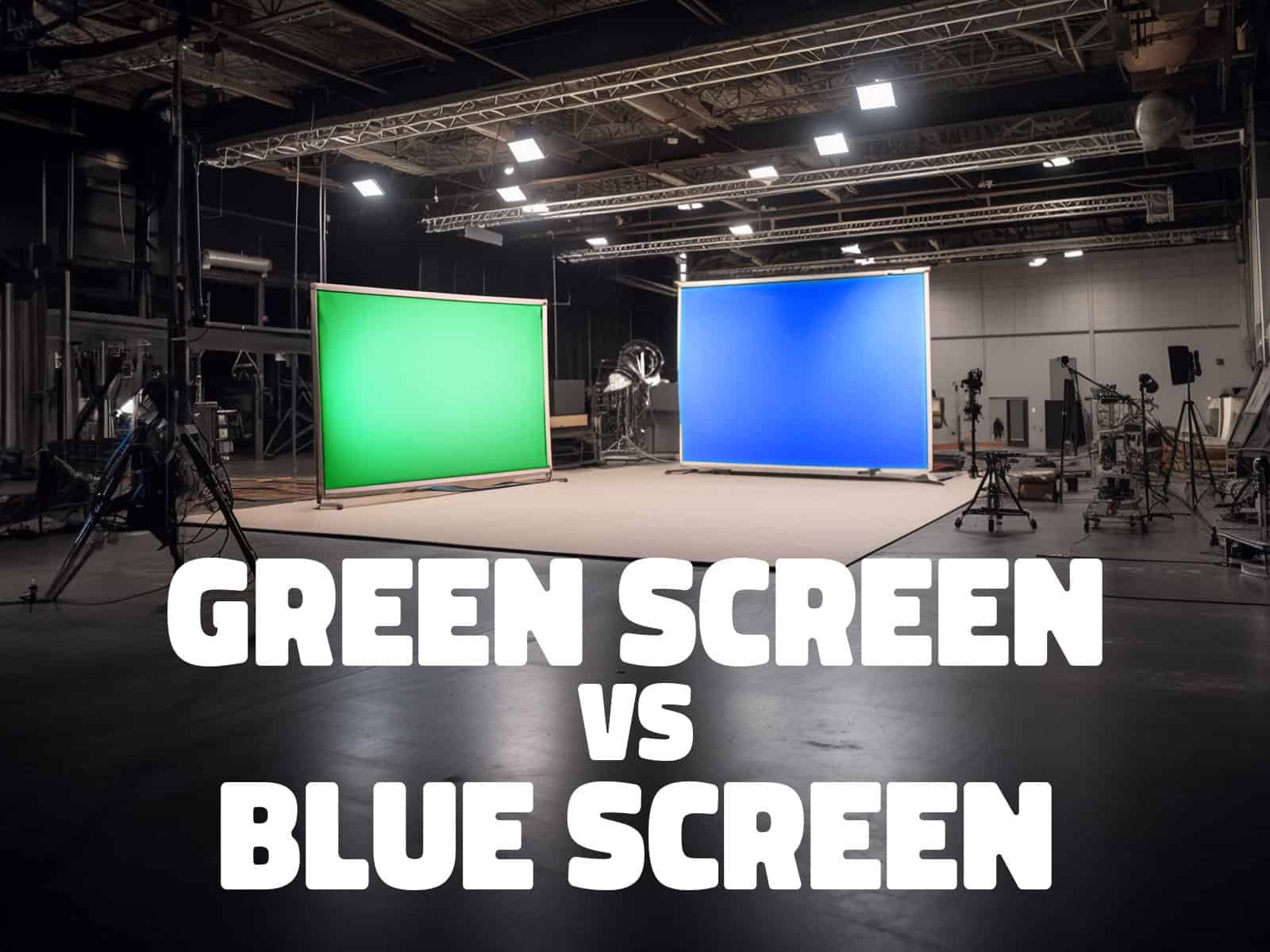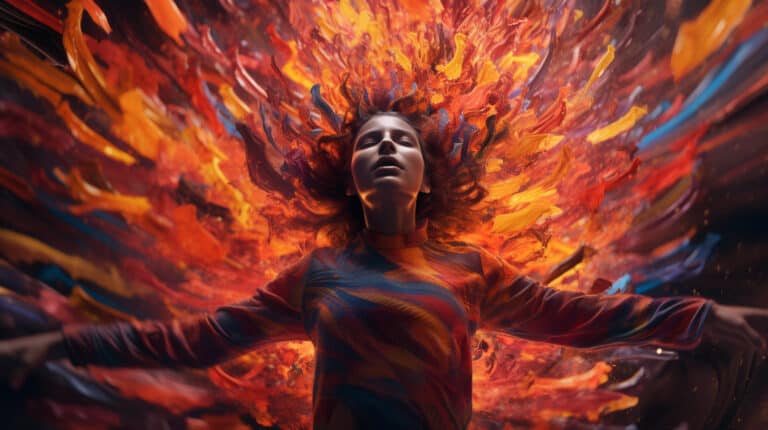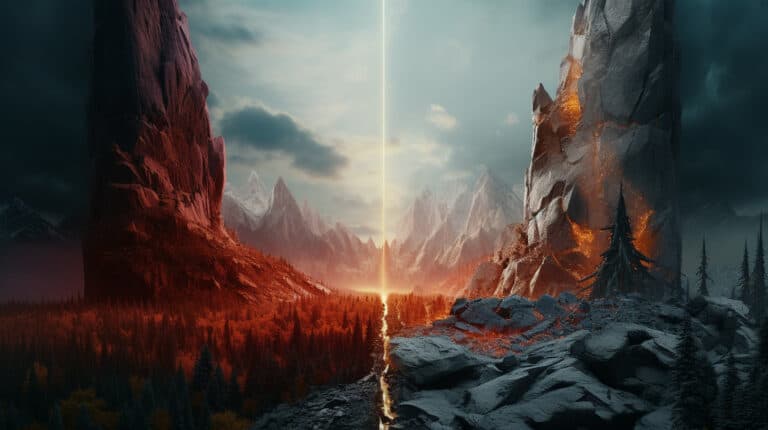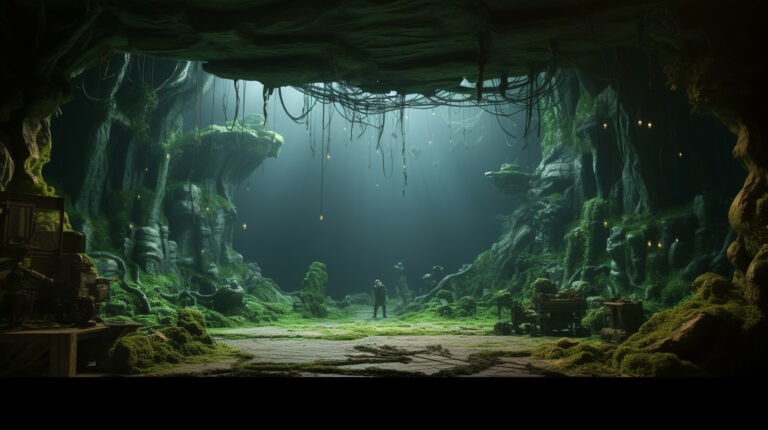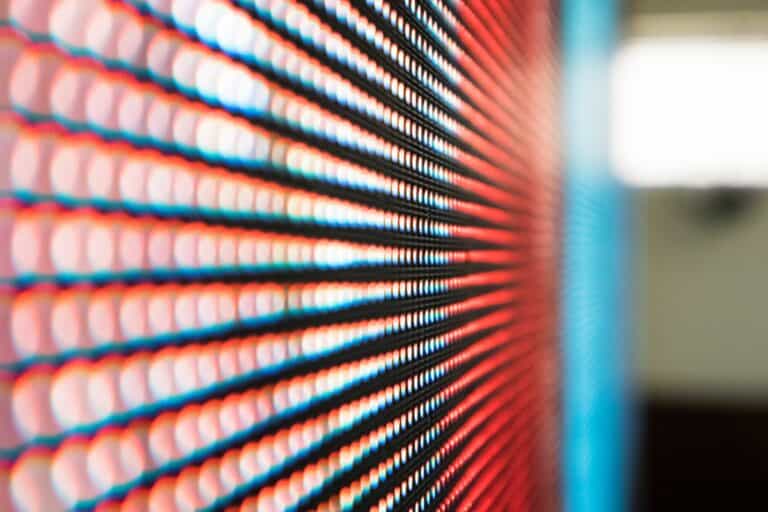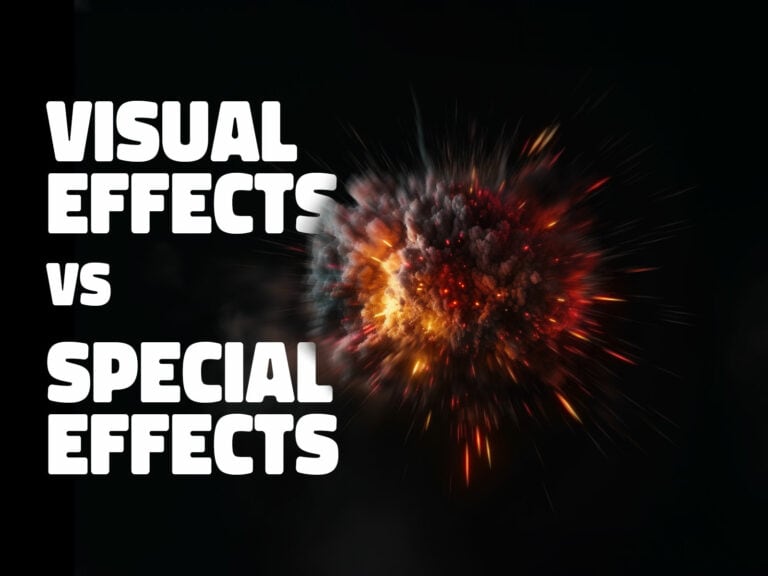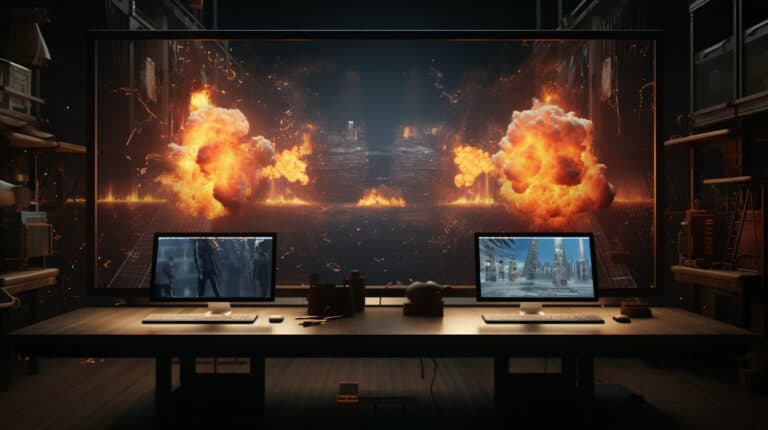Blue Screen Vs. Green Screen: Choosing the Right Backdrop for Your Needs
The world of filmmaking and visual effects often relies on the use of blue screens and green screens to create realistic environments and seamless composites. These screens serve as a backdrop for actors and objects, allowing artists to replace the solid color with any desired background during post-production. But how does one decide which color screen to choose for a particular project? The answer lies in understanding their unique properties and applications.
Blue screens and green screens both have their respective pros and cons that filmmakers must consider when planning their projects. Green screens typically have a higher luminance value than blue screens, making them easier to light and ideal for daytime scenes. Conversely, blue screens are more suitable for night or darker scenes due to their lower luminance level. In addition, blue screens produce less color spill on subjects, especially those with fine details or blonde hair, leading to a cleaner and more accurate separation of the subject from the background.
Factors such as lighting, wardrobe, and scene composition play a significant role in determining whether to choose a blue or green screen for a specific project. By carefully weighing these factors, filmmakers and visual effects artists can create impressive visual storytelling that captivates audiences.
Blue Screen vs. Green Screen: Basics
Chroma Keying
Chroma keying is a technique used in video production and post-production to replace a specific color (usually green or blue) in a frame with new images or videos. This process is widely employed in filmmaking, television, streaming, and news broadcasting, allowing seamless integration of different visuals to create captivating and immersive scenes.
What Is Green Screen
A green screen is a background used in video production with a uniform green color. The green color is specifically chosen because it sits at the opposite end of the color spectrum from human skin tones, making it less likely to interfere with the final result. Moreover, green screens have a higher luminance compared to blue screens, which makes them easier to light and generally more suitable for daytime scenes or shots that need to appear bright and well-lit. However, the high luminance might cause color spill, especially on fine details and edges, which makes it essential to control the lighting conditions and have a strong understanding of the process.
What Is Blue Screen
A blue screen, similar to a green screen, is a backdrop with a consistent blue hue used to remove the background during post-production. The blue color is favored when there’s more green in the foreground subjects, such as plants or green-colored clothing. In addition, a blue screen typically has lower luminance than a green screen, making it preferable for night scenes as there will be less light bounce and spill. It’s also a better choice for subjects with fine details and edges, such as blonde hair, as it’s less prone to heavy color spill compared to a green screen.
Factors to Consider When Choosing a Screen
Lighting and Luminance
When choosing between a blue screen and a green screen, consider the lighting conditions of your shoot. Green screens have more luminance than blue screens, making them a better choice for well-lit daytime scenes. On the other hand, blue screens are better suited for night scenes, as their lower luminance causes less light to bounce around.
Environment
The filming environment should also be taken into account when selecting a screen color. If shooting outdoors, consider the surrounding colors, ensuring that your chosen screen color contrasts well with the environment. Avoid using green screens in areas with a lot of vegetation, as the screen may blend in with the background. Similarly, avoid using blue screens in locations with blue elements, such as water or sky.
Color Spill and Filming Objectives
Color spill occurs when screen color reflects onto the subject, which can be challenging to edit out in post-production. Green screens may have more color spill compared to blue screens, especially on fine details and edges. For intricate subjects or detailed scenes, you may prefer using a blue screen to minimize color spill and make editing easier.
Clothing and Costumes
Consider the colors of clothing and costumes that will be used during filming when choosing between a blue or green screen. Avoid using a screen color that matches the wardrobe of the subject, as it will cause them to blend in with the background. Green screens are often preferred because green is an uncommon color in clothing, whereas blue is more frequently used in outfits.
Digital Cameras and Equipment
When selecting a screen color, consider the compatibility of your digital cameras and equipment. Green screens are often easier to track for digital cameras and editing programs due to their high luminosity. However, some cameras may experience more chromatic aberration with green screens and perform better with blue screens.
Budget
Lastly, consider your budget when choosing between a blue screen and a green screen. Both types of screens are available at various price points, but cost should not be the only factor to consider. Evaluate the other factors mentioned above to determine the best screen for your project to save time and ensure a high-quality final product.
Key Differences Between Blue and Green Screens
Pros and Cons of Each Screen
Green screens are often chosen due to their high luminosity, making them easier to track with digital cameras and editing programs. The increased luminosity also requires less light to achieve a well-lit shot. However, the downside of green screens is that they tend to bounce back more color, causing potential issues with color spill, especially in darker scenes.
Blue screens, on the other hand, have lower luminosity, which makes them a more suitable choice for nighttime scenes. They are less likely to cause color spill, but may require more lighting due to their lower reflectivity.
Suitability for Different Scenes
- Daytime scenes: A green screen is a better choice for daytime scenes, as its higher luminance creates a brighter and well-lit shot.
- Nighttime scenes: In contrast, a blue screen is more suitable for nighttime scenes due to its lower luminosity, reducing potential light bounce.
- Scenes with human subjects: Skin tone plays a significant role in determining the optimal screen color. For subjects with fairer skin tones, a green screen may be more suitable, whereas a blue screen may work better for those with darker skin tones.
Skin Tone and Human Skin Tones
When working with human subjects, filmmakers need to consider the impact of skin tones on screen color selection. Green screens have a luminance that generally works well for people with lighter skin tones, avoiding blending of the subject with the background. In contrast, blue screens are often more suited to subjects with darker skin tones. However, there is no one-size-fits-all solution, and filmmakers must evaluate the specific context of each scene to determine the best screen color choice for their project.
Other Chroma Key Screen Colors
In the world of chroma keying, green and blue screens are the most popular choices due to their distinct hues and ease of keying. However, there are instances where other chroma key screen colors might prove beneficial. One example can be seen in the film industry, where sand colored screens were utilized for a specific purpose.
Dune’s Sand Colored Screens
In the recent adaptation of the sci-fi novel Dune, the filmmakers employed a unique approach to chroma keying by using sand-colored screens instead of the traditional green or blue screens. This decision was made to better suit the film’s desert settings and to avoid the challenges that come with using blue or green screens in such an environment.
Sand-colored screens reduced the problem of color spill, which is often encountered with green and blue screens due to their high luminance levels. Green screens, for example, may cause color spill on fine details and edges, especially on blonde hair or other intricate costumes. By using a screen color that closely matched the surrounding environment, the filmmakers could more accurately blend actors and practical sets with computer-generated imagery (CGI).
Additionally, sand-colored screens allowed the filmmakers to better control the lighting in their desert scenes. As mentioned earlier, green screens have a higher luminance than blue screens, which could potentially cause issues when filming darker or nighttime scenes in the desert. The sand-colored screens provided a natural balance of luminance, making it easier for the lighting team to match the intended mood and atmosphere of each scene.
In conclusion, while green and blue screens are the industry standard for most chroma-keying applications, using alternative screen colors, such as sand-colored screens in Dune, can provide distinct advantages based on the specific requirements of a project.
Techniques and Tips for Effective Chroma Keying
Post-Production Process
Chroma keying is an essential part of video production that allows for the seamless integration of different elements into a single scene. The post-production process involves removing the green or blue screen backdrop and replacing it with the desired background image or video. When choosing between a blue or green screen, it’s important to consider factors such as light spill and luminosity; green screens tend to be more easily keyed out due to their higher luminosity.
Fine Details and Matte
In chroma key compositing, the matte is used to separate the subject from the background, allowing for a clean and precise integration. One key to a high-quality matte is to ensure that your green or blue screen is evenly lit, avoiding shadows and hotspots. Properly setting the brightness levels on your screen (40-45 IRE for chroma green and 25-30 IRE for chroma blue) helps achieve a uniform matte.
Backdrop
An essential part of chroma keying is the backdrop itself. When setting up the screen, ensure it is as flat and wrinkle-free as possible. If your green or blue screen has been folded, iron out any creases to create a smooth surface for better results. The larger the screen, the more space you’ll have to work with, and keeping your subject at a reasonable distance will reduce light spillover issues.
Props and Wardrobe
The props and wardrobe used in a video production can have a significant impact on the overall chroma-keying results. Avoid using colors that closely resemble the screen’s color as these might be keyed out unintentionally. If a specific color is required, ensure that it is distant enough from the color wheel of the chosen screen to avoid complications.
In addition to color, be mindful of the props’ reflective properties. Highly reflective materials may cause unwanted reflections of the screen’s color on the subject, resulting in a more challenging post-production process.
Lighting
When lighting your chroma key setup, there are a few key tips to keep in mind. Evenly lighting the backdrop is crucial for achieving a consistent color throughout the screen. In addition, avoid creating shadows on the screen or subject, as this can cause difficulties in the post-production process. Position your talent at an adequate distance from the screen to help reduce light spill, and use false color techniques to ensure the ideal brightness level on your backdrop.
Famous Examples of Green and Blue Screen Usage
Special Effects in Hollywood Blockbusters
Green and blue screens are vital tools in the creation of special effects for many Hollywood blockbusters. For example, the iconic “Matrix” trilogy extensively used green screens to achieve its groundbreaking visual effects, especially for the famous “bullet time” scenes. Similarly, blue screens played a crucial role in the production of “Avatar,” allowing the filmmakers to seamlessly integrate live-action actors with computer-generated characters and environments. These Hollywood productions showcase how chroma key techniques transform on-screen visuals and immerse audiences into their fictional worlds.
Short Films and Television
In addition to feature films, green and blue screens find applications in short films and television productions. The versatility of chroma keying enables filmmakers to achieve the desired VFX on smaller budgets. Independent filmmakers and student productions often use these techniques to create impressive visuals without the need for expensive sets or locations. For example, the short film “At The End” used a green screen to create a post-apocalyptic world.
Television shows, particularly those involving special effects or fantasy settings, also rely heavily on green and blue screens. Examples include popular shows such as “Game of Thrones,” “The Mandalorian,” and “Doctor Who.” News broadcasts often utilize chroma key technology as well, especially for weather segments and virtual sets. This widespread usage of green and blue screens in television enables the efficient production of high-quality content for various genres.
To summarize, green and blue screens have been extensively used in various disciplines to create stunning visual effects. Their applications range from Hollywood blockbusters and independent films to television programs, showcasing their importance in the world of film production.

